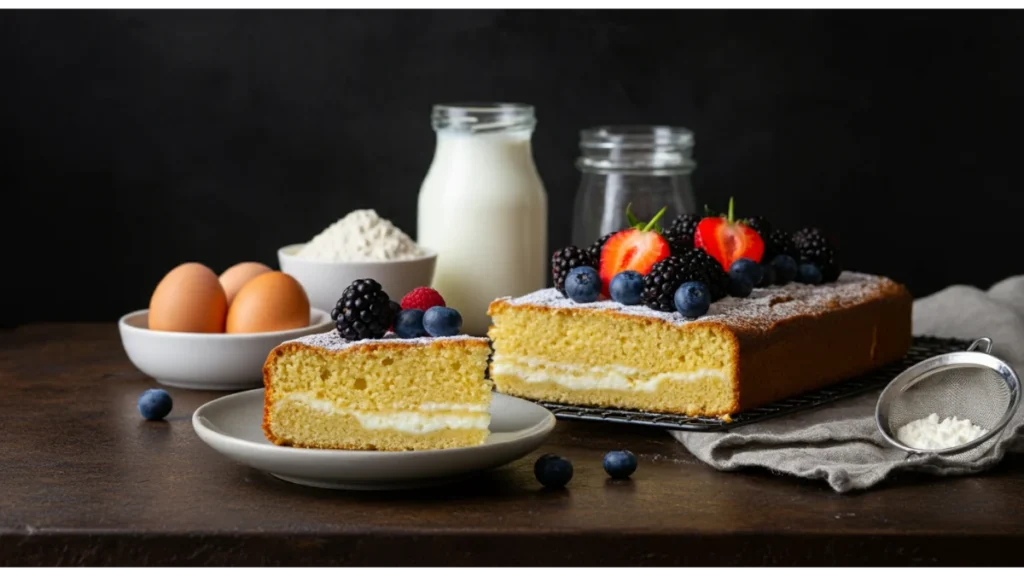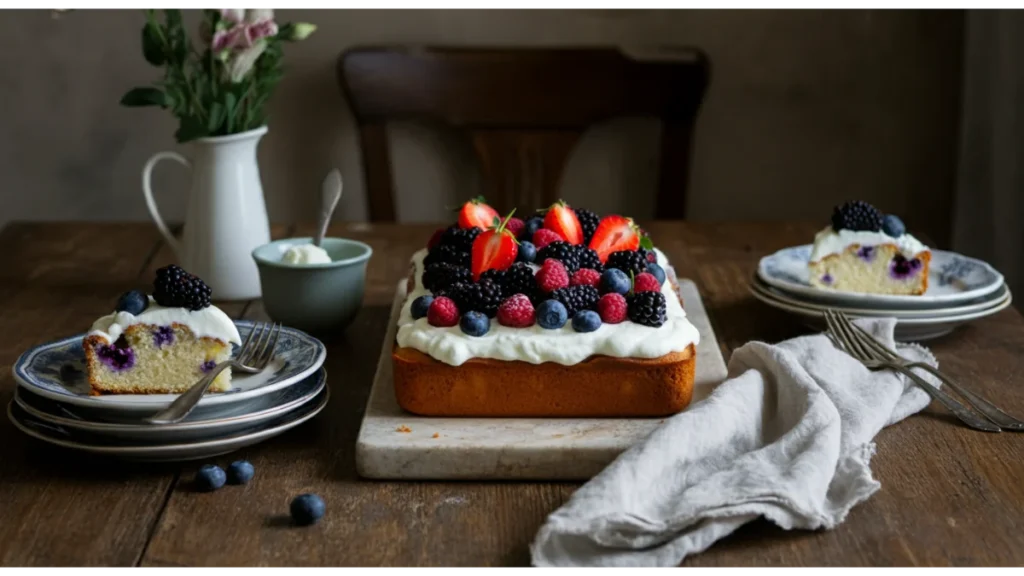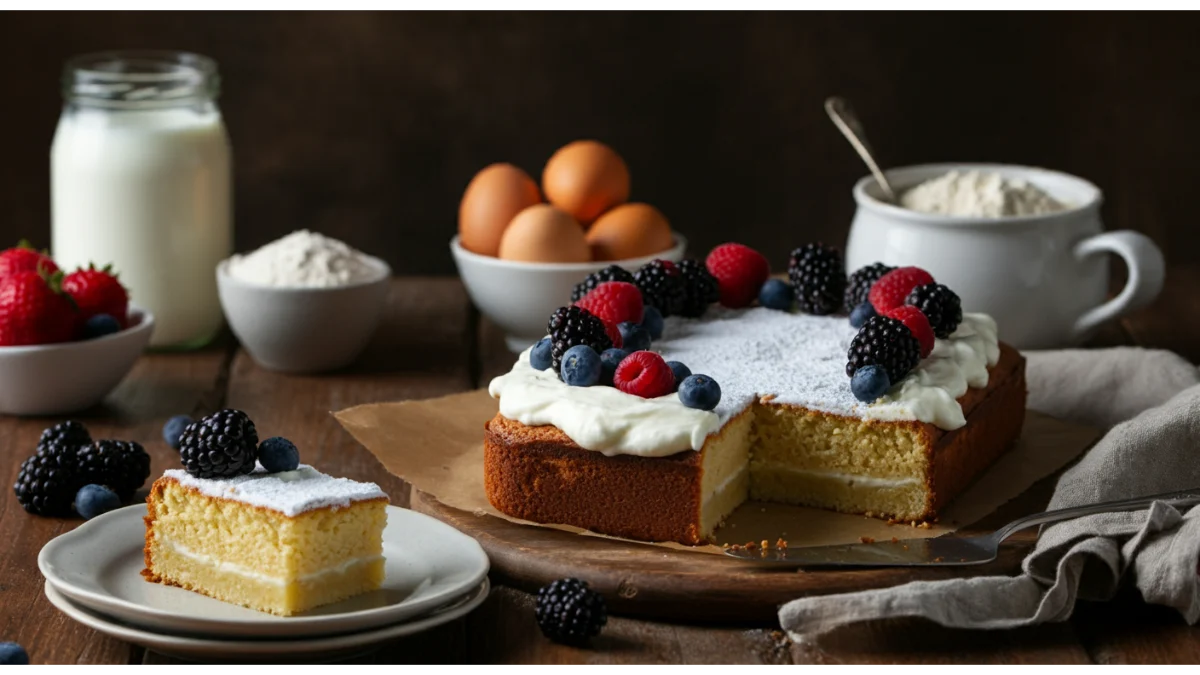Kefir Sheet Cake: The Deliciously Unique Dessert Everyone Will Love!
Desserts have a unique way of bringing joy and satisfaction to our lives, and among the myriad of options available, few can compete with the delightful charm of a homemade cake. One such cake that has been gaining popularity for its unique flavor and health benefits is the kefir sheet cake. This cake not only satisfies your sweet cravings but also introduces the goodness of kefir—a fermented dairy product rich in probiotics—into your diet.
Kefir sheet cake is a versatile dessert that can be enjoyed on various occasions, from casual family gatherings to elegant celebrations. Its moist texture, tangy flavor, and ease of preparation make it a favorite among bakers of all skill levels. In this article, we will explore the key aspects of kefir sheet cake, including its nutritional benefits, detailed ingredients list, step-by-step instructions for making it, and tips for overcoming common baking challenges. Additionally, we will discuss variations and adaptations to suit different dietary preferences and trends surrounding kefir. By the end of this article, you’ll be fully equipped to bake a delicious kefir sheet cake that will surely impress your friends and family.
Key Aspects of Kefir Sheet Cake
What is Kefir and Why Use It in Baking?

Kefir is a fermented milk drink that originated in the Caucasus region and has been enjoyed for centuries. It is made by adding kefir grains—small, gelatinous clumps of bacteria and yeast—to milk, which ferments the lactose and produces a tangy, creamy beverage. Kefir is often compared to yogurt but has a thinner consistency and a more complex flavor profile due to the diverse range of microorganisms involved in its fermentation process.
The health benefits of kefir are numerous, making it a popular choice for those seeking to improve their gut health and overall well-being. Rich in probiotics, vitamins, and minerals, kefir is not only delicious but also a nutritious addition to your diet.
Nutritional Benefits of Kefir
- Probiotics: Kefir is packed with beneficial bacteria that promote a healthy gut microbiome. Regular consumption of probiotics can aid digestion, enhance nutrient absorption, and support immune function.
- Vitamins and Minerals: Kefir is a good source of essential nutrients, including calcium, magnesium, vitamin B12, and vitamin K2. These nutrients are vital for bone health, energy production, and overall bodily functions.
- Low in Lactose: The fermentation process breaks down much of the lactose found in milk, making kefir easier to digest for those who are lactose intolerant.
- Antioxidants: Kefir contains bioactive compounds that have antioxidant properties, helping to combat oxidative stress and inflammation in the body.
- Weight Management: The high protein content in kefir can promote feelings of fullness, which may aid in weight management when incorporated into a balanced diet.
Research has shown that incorporating fermented foods like kefir into your diet can lead to improved digestive health and a stronger immune system. For instance, a study published in the Journal of Nutrition found that regular consumption of probiotics can enhance gut health, reduce inflammation, and even improve mood.
Ingredients You’ll Need for Kefir Sheet Cake

To create a delicious kefir sheet cake, you will need a selection of simple ingredients. Here’s a clear breakdown:
Essential Ingredients:
- 1 ½ cups all-purpose flour: Serves as the foundation for the cake.
- 1 cup granulated sugar: Sweetens the cake and contributes to its moisture.
- ½ cup unsalted butter, softened: Adds richness and flavor.
- 1 cup kefir: The key ingredient that gives the cake its unique taste and texture.
- 3 large eggs: Acts as a binding agent and adds moisture.
- 1 teaspoon baking powder: Helps the cake rise.
- 1 teaspoon vanilla extract: Enhances the flavor.
- ½ teaspoon salt: Balances the sweetness.
Optional Ingredients for Variations:
- 1 cup fresh or frozen fruit (e.g., blueberries, strawberries): Adds flavor and moisture.
- 1 teaspoon cinnamon or nutmeg: Provides warmth and spice.
- ½ cup chopped nuts (e.g., walnuts, almonds): Adds texture and crunch.
- Zest of one lemon or orange: Introduces a refreshing citrus note.
Step-by-Step Instructions to Make Kefir Sheet Cake
Making a kefir sheet cake is straightforward, making it an excellent choice for bakers of all skill levels. Follow these detailed steps to create your cake:
1. Preheat the Oven
Start by preheating your oven to 350°F (175°C). Grease a 9×13-inch baking sheet with butter or cooking spray to prevent sticking.
2. Prepare the Dry Ingredients
In a large mixing bowl, whisk together the flour, baking powder, and salt. This action guarantees that the leavening agent is uniformly mixed with the flour.
3. Cream the Butter and Sugar
In another bowl, beat the softened butter and granulated sugar together using an electric mixer on medium speed until the mixture is light and fluffy. This technique adds air to the batter, producing a fluffier cake.
4. Add the Eggs and Kefir
Introduce the eggs individually, ensuring thorough mixing after each one. Then, pour in the kefir and vanilla extract, stirring until combined.
5. Combine Wet and Dry Ingredients
Slowly incorporate the dry ingredients into the wet mixture, stirring delicately until they are barely combined. Avoid overmixing; it’s fine to leave some small lumps.
6. Fold in Optional Ingredients
If you’re using any optional ingredients like fruit or nuts, gently fold them into the batter.
7. Bake
Transfer the batter to the greased baking sheet, smoothing it out evenly. Place it in the preheated oven and bake for 25-30 minutes, or until a toothpick inserted in the center comes out clean.
8. Cool and Serve
After baking, take the cake out of the oven and let it cool in the pan for approximately 10 minutes. Then, move it to a wire rack to cool completely before cutting.
Nutritional Value
Understanding the nutritional value of kefir sheet cake can help you appreciate its health benefits. Here’s a table outlining the nutritional value of key ingredients in kefir sheet cake:
| Ingredient | Nutritional Value (per serving) | Benefits |
|---|---|---|
| Kefir (1 cup) | 150 calories, 8g protein | Probiotics, calcium, B vitamins |
| Sugar (1 cup) | 774 calories | Energy source |
| Butter (½ cup) | 810 calories | Rich in fat, flavor enhancer |
| Eggs (3 large) | 210 calories, 18g protein | Protein, vitamins D and B12 |
| Flour (1 ½ cups) | 684 calories | Carbohydrates for energy |
Benefits of Kefir Sheet Cake

Kefir sheet cake is not just a tasty dessert; it also provides several benefits that make it a worthwhile addition to your dessert table:
- Healthier Dessert Option: The inclusion of kefir adds probiotics to the cake, making it a healthier alternative to traditional desserts. The probiotics can aid digestion and improve gut health.
- Moist and Flavorful: The tanginess of kefir keeps the cake moist and adds a unique flavor profile that sets it apart from other cakes.
- Versatile Recipe: This recipe can be easily adapted to suit various dietary preferences. Whether you want to make it gluten-free, dairy-free, or vegan, there are plenty of substitutions available.
- Easy to Prepare: The simplicity of a sheet cake makes it an ideal choice for novice bakers. The step-by-step instructions ensure that anyone can create a delicious dessert without feeling overwhelmed.
- Crowd-Pleasing: The large size of a sheet cake means it can feed a crowd, making it perfect for parties, potlucks, or family gatherings.
- Customizable: You can easily customize the flavor of the cake by adding different fruits, spices, or extracts, allowing you to create a unique dessert for any occasion.
Overcoming Challenges
Baking can sometimes be tricky, but here are some practical tips to address common issues when making kefir sheet cake:
- Cake Sinks in the Middle: This can happen if the batter is overmixed or if too much leavening agent is used. Ensure that you mix just until combined and measure your baking powder accurately.
- Dry or Crumbly Texture: If the cake turns out dry, it may be due to too much flour or not enough liquid. Be sure to measure your ingredients carefully and consider adding a bit more kefir if the batter seems too thick.
- Uneven Baking: To achieve even baking, rotate the cake halfway through the baking time. This helps ensure that all sides receive equal heat.
- Frosting Issues: If you choose to frost your cake, make sure it is completely cool before applying frosting. A hot cake may lead to the frosting melting and sliding off.
- Overbaking: Keep an eye on the cake as it bakes. Ovens can vary, so check for doneness a few minutes before the recommended baking time.
Future Trends
As the popularity of kefir continues to rise, we can expect to see more innovative recipes and products featuring this versatile ingredient. Health-conscious consumers are increasingly seeking out probiotic-rich foods, and kefir fits the bill perfectly. In the coming years, we might see:
- Kefir-based Desserts: More bakeries and home cooks experimenting with kefir in various dessert formats, from cheesecakes to ice creams.
- Flavored Kefir Products: The market may expand to include a wider range of flavored kefir options, making it easier to incorporate into recipes.
- Increased Awareness of Fermented Foods: As the health benefits of probiotics become more widely known, more people will likely turn to fermented foods like kefir, leading to a greater demand for recipes and products.
- Kefir in Savory Dishes: Beyond desserts, kefir can also be used in savory dishes, such as salad dressings and marinades, expanding its culinary applications.
Tips and Tricks Section
Here are some helpful tips to enhance your kefir sheet cake experience:
- Experiment with Flavors: Don’t hesitate to get creative! Add spices like cinnamon or nutmeg for warmth, or incorporate citrus zest for a refreshing twist.
- Use Fresh Ingredients: The caliber of your ingredients will significantly influence the outcome of the cake. For the best flavor, use fresh eggs, high-quality butter, and good-quality kefir.
- Storage Recommendations: Keep any leftover cake in an airtight container at room temperature for no more than three days. For extended preservation, think about freezing individual slices wrapped in plastic.
- Frosting Ideas: Consider using a cream cheese frosting or a simple glaze made from powdered sugar and lemon juice to complement the tanginess of the cake.
- Serving Suggestions: Serve the cake warm or at room temperature, and consider pairing it with fresh fruit or a dollop of whipped cream for added indulgence.
Variations and Adaptations
Kefir sheet cake is highly adaptable. Here are some diet-friendly variations you might consider:
- For Gluten-Free Options: Replace all-purpose flour with a gluten-free flour mix. Ensure that the blend contains xanthan gum for better texture.
- Dairy-Free: Replace kefir with a dairy-free yogurt or plant-based kefir alternative. Use coconut oil or a dairy-free butter substitute for the fat.
- Vegan: Use flax eggs (1 tablespoon ground flaxseed mixed with 2.5 tablespoons water = 1 egg) instead of regular eggs and opt for a plant-based butter and kefir alternative.
- Low-Sugar: Substitute sugar with natural sweeteners like honey or maple syrup, adjusting the liquid content accordingly.
- Fruit Variations: Experiment with different fruits based on the season. Raspberries, peaches, or even diced apples can add unique flavors and textures to your cake.
FAQs Section
Q: Can I substitute kefir with yogurt?
A: Yes, you can substitute kefir with plain yogurt, but the cake may not have the same tangy flavor.
Q: How do I store leftover cake?
A: Store leftover cake in an airtight container at room temperature for up to three days or freeze for longer storage.
Q: Is it possible to prepare this cake in advance?
A: Yes, you can bake the cake one day ahead. Just cover it well and store it at room temperature.
Q: What can I use instead of eggs?
A: You can use flaxseed meal or applesauce as an egg substitute. Use 1 tablespoon of flaxseed meal mixed with 2.5 tablespoons of water for each egg.
Q: Can I add frosting to the cake?
A: Absolutely! Cream cheese frosting, whipped cream, or a simple glaze can enhance the flavor of your kefir sheet cake.
Q: How can I make the cake more flavorful?
A: Consider adding spices, extracts, or citrus zest to the batter to enhance the flavor profile. You can also experiment with different types of kefir, such as flavored varieties.
Conclusion
Kefir sheet cake is an excellent example of how you can enjoy a delicious dessert while reaping the health benefits of fermented foods. By incorporating kefir into your baking, you not only enhance the flavor and texture of your cakes but also add a nutritious element that can contribute to your overall well-being.
As you embark on your baking journey, remember to experiment with flavors, adapt the recipe to suit your dietary needs, and most importantly, have fun in the kitchen. Baking is as much about the process as it is about the final product. Enjoy the experience, share your creations with loved ones, and savor every bite of your delicious kefir sheet cake.


1 thought on “Kefir Sheet Cake: The Deliciously Unique Dessert Everyone Will Love!”